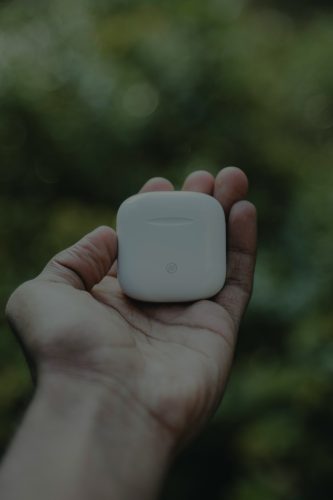You’re cruising through your computer’s Task Manager when suddenly you spot something strange: mDNSResponder.exe. You wonder, “What is this? Is it a virus? Is my computer safe?!?” Take a deep breath. Let’s decode the mystery of mDNSResponder.exe in a fun and simple way.
Welcome to the World of Bonjour
Before we dive into whether mDNSResponder.exe is good or evil, we need to meet its creator: Apple’s Bonjour service.
Bonjour is a fancy tech word for “Hello” in French. Think of it like Apple’s way for devices to say “hello” to each other on a network. It helps your devices find and talk to each other without needing any complicated configuration.
So, when you see mDNSResponder.exe running, it’s likely part of that friendly Bonjour service, quietly working in the background.
What Is mDNSResponder.exe?
Now, let’s break that name down:
- m stands for Multicast – fancy word for sending data to multiple recipients at once.
- DNS is Domain Name System – it helps match names like “printer.local” to an IP address.
- Responder means – yep, you guessed it – it “responds” to those network questions.
It’s the tool Bonjour uses to ask, “Where’s the nearest printer?” or “Is iTunes sharing any files?” Then it listens for an answer. Pretty awesome, right?
Where Does It Come From?
mDNSResponder.exe arrives quietly when you install Apple software like:
- iTunes
- Safari
- Apple TV applications
- iCloud services
But it’s not just Apple! Some Windows programs install Bonjour, too. Apps like Adobe Creative Suite, Skype, and even some printer software use it to find stuff nearby.
What Does It Actually Do?
Great question! Here’s a small list of what it quietly manages behind the scenes:
- Helps discover devices on your local network like printers and speakers.
- Allows apps to share content easily.
- Helps with peer-to-peer connections (like file sharing or screen sharing).
All of that without needing geeky typing, passwords, or setup screens. Bonjour and mDNSResponder keep things automatic and easy.
Sounds Helpful… So Why the Suspicion?
Well, people worry about mDNSResponder.exe for a couple of reasons:
- The name looks weird and mysterious.
- It runs in the background all the time.
- It eats up memory sometimes.
- Some malware disguises itself using fake or similar-looking names.
These are all fair concerns! Let’s break down how to stay safe.
How to Know If It’s Legit
Fear not. With a few simple steps, you can find out whether your mDNSResponder.exe is a helpful house guest or an unwanted invader.
1. Check Its File Location
Press Ctrl + Shift + Esc to open Task Manager. Find mDNSResponder.exe, right-click it, and choose “Open file location.”
The real Bonjour file lives here:
C:\Program Files\Bonjour\
If you find it somewhere else — like C:\Windows\System32\ or a random folder — that’s suspicious!
2. Look at the Digital Signature
Right-click on the file, select “Properties,” then go to the “Digital Signatures” tab. If it says it’s signed by Apple Inc., you’re golden.
3. Scan for Malware
If you’re still not sure, run a full antivirus scan with software like Avast, Malwarebytes, or Windows Defender. Just to be extra safe.
Can I Remove It?
Technically, yes. But should you?
If none of your apps rely on Bonjour, you could uninstall it. But if you use iTunes, iCloud, or anything that shares files or devices over a network, you might break stuff unknowingly.
How to Remove mDNSResponder (if you really want to)
Follow these steps:
- Go to Control Panel > Programs and Features.
- Find and select Bonjour or any software that includes it.
- Click Uninstall.
That will usually remove mDNSResponder.exe as well.
Important: Just make sure you don’t need it. Apps that rely on Bonjour may stop working correctly.
What Happens If It’s Malware?
If you discover that your version of mDNSResponder.exe is not in the right place, not signed by Apple, and your antivirus solution flags it — then it may be malware in disguise.
In that case:
- Quarantine or delete the file using your antivirus software.
- Update your system to patch any security holes.
- Consider doing a system restore if the infection made changes.
And don’t panic. You’re doing great just by catching it in time!
Tips to Stay Safe
If you want to make sure your system stays clean and smooth, follow these tips:
- Keep your software updated – bugs and vulnerabilities often get patched in updates.
- Use reliable antivirus software.
- Don’t download strange files or click shady links.
- Check Task Manager now and then to spot anything suspicious early.
Summary: Friend or Foe?
Let’s do a quick recap so you can impress your techy friends:
- mDNSResponder.exe is part of Bonjour, Apple’s friendly network service.
- It helps apps and devices find each other easily on a local network.
- It’s usually safe, especially if it lives in the
Program Files\Bonjourfolder and is signed by Apple. - Some malware tries to imitate it, so stay alert!
If it’s legit, let it do its thing. If it’s shady, kick it to the curb.
And There You Have It!
You’re now a certified mDNSResponder expert! 🎓
Whether it’s helping you sync iTunes with your speaker or letting Adobe find your printer, mDNSResponder is there to help — not to harm.
So next time you spot it running, give it a little virtual high-five. Unless, of course, it’s trying to trick you — in which case, you now know exactly what to do.
Stay smart, stay safe, and happy computing!
